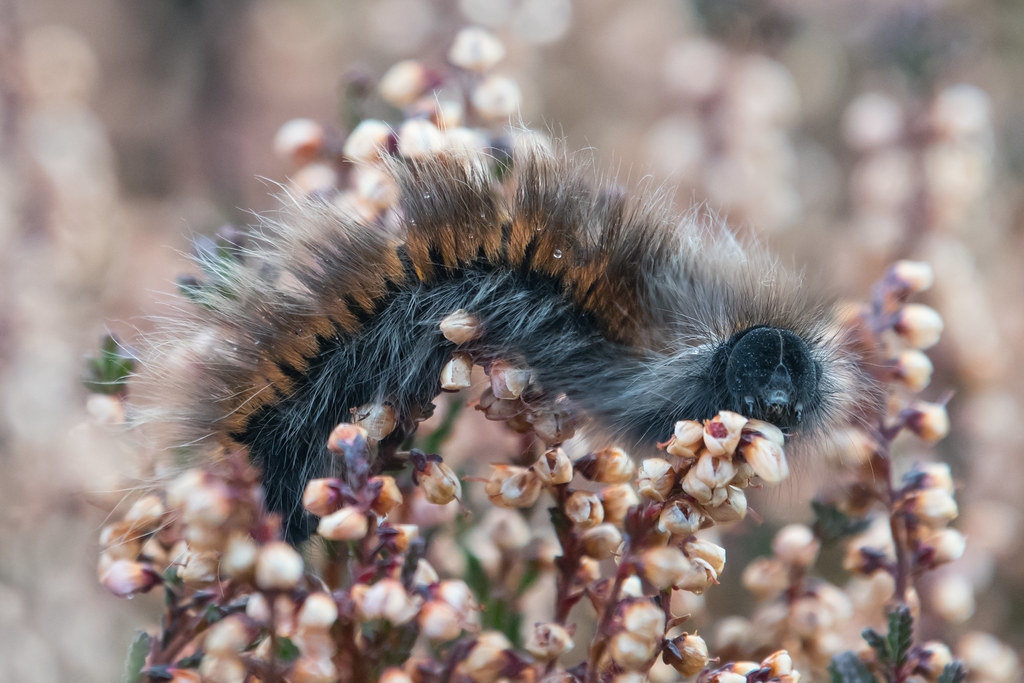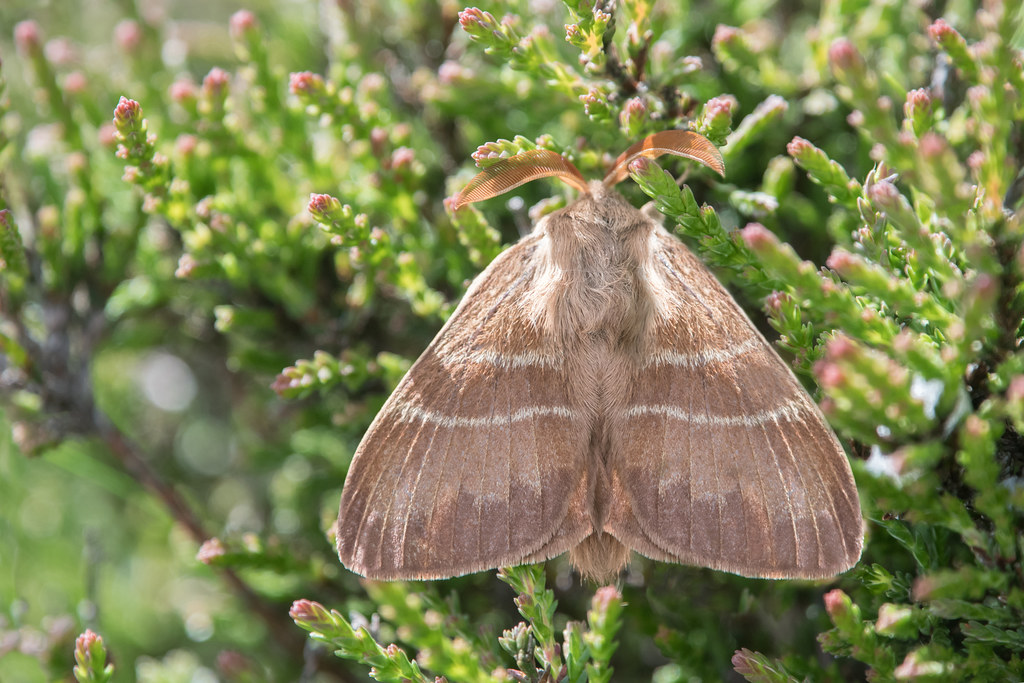
Tim writes: I stumbled across two large caterpillars of Fox Moth in mid-October within a metre or two of each other, but no others despite searching. This one was crawling around on the recently deceased flowers of heather on the moors. They are big too, as long as my longest finger though not quite as wide, or maybe wider if you include all that fur. This one shows the eyes and face really well and reminds me of that famous illustration of the smoking caterpillar in Alice in Wonderland. Those tiny things that look like legs below the eye are actually larval antennae which smell the vegetation to make sure it is suitable to eat. Fox Moth caterpillars hatch in June and are fully fed by September, but they overwinter as a caterpillar under moss or leaf litter and don’t pupate until the following spring. They don’t feed in the spring but sunbathe conspicuously. I often see Cuckoos taking the fully-grown caterpillars of Fox Moth in April and early May, as they seem to specialise on eating big, hairy caterpillars. The caterpillar is apparently sometimes known as the Devil’s Gold Ring. When young the caterpillars are black with golden rings, and maybe the Devil’s because the irritating hairs can cause a rash on sensitive skin. Though I wonder if it is because caterpillars often curl up into a ring if disturbed, though they look more bronze than gold.

The adult Fox Moth is a male, identifiable by his feathery antennae (female antennae are simple and strand-like) which he uses to detect virgin female Fox Moths. Males usually fly continuously while searching for females so I was quite lucky to find this resting individual. The name Fox Moth was coined from the foxy colouration of male moths, but this male is grey, more like a female in colouration. Apparently males from northern, upland moorlands are darker and greyer than those from the South, which probably explains why I rarely see fox-coloured males. It was the 18th Century artist and naturalist Benjamin Wilkes who first called it the Fox-coloured Moth, but in France and Germany they call it the Bramble Silkmoth (Bombyx de la Ronce and Brombeerspinner) because its caterpillar sometimes feeds on Brambles and because it spins a silken coccoon. In the Netherlands it is known as the Glutton (Veelvraat) because the female has an exceedingly plump abdomen, but ironically the adult moths are unable to feed. The scientific name is Macrothylacia rubi; Macrothylacia means large bag because of the papery cigar-shaped coccoon, and rubi from its Bramble larval foodplant (Rubus).
[registration_form]
and frequently burnt to death on grouse moors no doubt
Along with several other moorland species. It has been suggested by Roy Leverton that the UK extinction of the Small Lappet moth Phyllodesma ilicifolia in the nineteenth century may in part have been due to the rise in popularity of driven grouse shooting. The species preferentially selected the older growth heather and bilberry for egg laying which of course were always the areas that were next in the rotation to be burned.